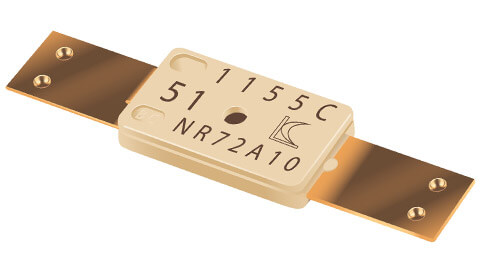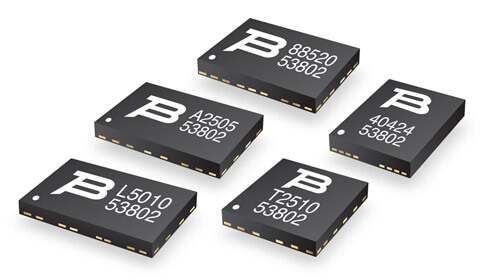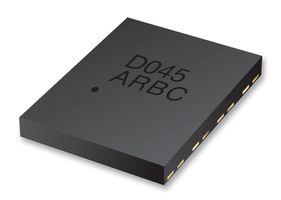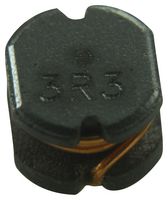How Will the Internet of Things Drive New Innovations in Circuit Protection
We often hear in the news today that The Internet of Things (IoT) promises a future that will network billions of smart, connected devices. This predication covers many different types of devices and can include everything from coffee makers, washing machines, and wearable fitness devices to vending machines, automobiles, and medical diagnostic equipment.
What this often-quoted “billions of connected devices” statistic seems to understate is that these billions of IoT connected devices will need many more billions of electronic components in order to make the endpoints, gateways, and hubs, that is, all the infrastructure hardware required to make the IoT a reality. And perhaps the most important of these components is circuit protection devices.
After all, much of IoT hardware will be placed in remote locations, outdoors, and in public infrastructure settings. So, transients such as lightning, bursts, or electrostatic discharge (ESD) will be a constant threat to devices in these locations. Thus, systems optimized for IoT deployment will need to be designed with advanced surge and circuit protection to ensure sensitive circuits operate with the highest reliability.
To talk about circuit protection innovations that support IoT hardware and infrastructure, we invited David Johnson who is a Market Analyst for Bourns, a global electronics corporation that develops, manufactures and supplies a wide range of circuit protection components.
1. element14: There’s no disputing the fact that the Internet of Things, especially the Industrial IoT, is on a fast track to growth in the coming years. While much of the discussion about IoT development is about cloud platforms, communication protocols, the smart home and the connected automobile, circuit protection is an important building block for IoT hardware and its reliability. To give our readers some context, could you tell us how important circuit protection is to the development of a broad-based and reliable Internet of Things?
David Johnson: The importance of reliable, robust circuit protection cannot be understated. All IoT infrastructure components require a connection between the sensing nodes and the hardware in a computing platform. Many of these connections are made through digital ports that interface with sensitive electronic systems. These connections are susceptible to electrical transients caused by power surges, lightning strikes, or “dirty power”. If these components are not protected, transients are allowed to reach sensitive electronics where they can cause damage to those circuits, making it necessary to shut down the system until it is repaired.
2. element14: Let’s talk tech for a moment. What are the main types of power problems (lightning, power cross, power surge, ESD, etc.) for which IoT infrastructure must be protected? What are the key things that an IoT design engineer should know about these problems? If these problems are not addressed, how will they impact the “billions of connected devices” in the population?
David Johnson: Lightning strikes are the most commonly-anticipated problem, but an engineer must also take into account Electrostatic discharge (ESD), power overload, or surges caused by inductive load switching. Most of these issues have been known to the Telecom industry; in fact, they have numerous standards for these events, some of which include IEC 61000-4-2 (ESD), IEC 61000-4-4 (Electrical Fast Transient), and IEC 61000-4-5 (Surge/Lightning). These standards have been in place for many years and are constantly being reviewed and updated. If an engineer is not aware of the damage that can occur, their design could be susceptible to these issues and they could cause major interruptions in the flow of data.
3. element14: Can you talk about the current trends and innovations that are going on in the world of circuit or surge protection today? How will they impact the development, operation, quality of IoT devices?
David Johnson: The IoT relies heavily on “Big data”. Wider bandwidth and higher speeds are essential for transferring this data. The trend in circuit protection devices is lower capacitance, higher surge, and faster response time. Smaller footprints and hybrid configurations are also having an impact on the technology. Bourns is at the forefront of new technologies that meet these changing requirements and more stringent specifications. A prime example of this is our line of miniature resettable thermal cutoff devices (TCO). These devices are specifically engineered to handle abnormal, excessive current situations in rechargeable batteries. We just introduced the Bourns® Model AA series, which offers up to 37% more current capacity than our previous miniature resettable TCOs, and is capable of carrying 14A at 60°C, thereby supporting today’s denser, higher capacity battery cells.

Bourns® AA Series Mini-Breaker (Miniature Thermal Cutoff Device)

Bourns® TBU® High-Speed Protector
4. element14: Can you comment on the specific product offerings (e.g., the Bourns® TBU® High-Speed Protector ) in circuit protection that Bourns has developed to serve the IoT hardware market? What are their advantages and benefits?
David Johnson: Bourns has one of the industry’s broadest selection of products that can protect circuits from overvoltage as well as overcurrent conditions. The TBU® and TCS® series of high-speed protectors are devices that do not add capacitance to the signal line, and can be used in circuits such as CANBus connections, video surveillance or high-speed signal lines. They have an amazingly fast response time of less than 1µs, and a wide operating temperature specification. Bourns also offers a comprehensive line of TVS diode products that are valuable solutions in providing fast ESD and surge overvoltage protection. In addition, our Power TVS product line is ideal for high power overvoltage protection offering up to 470V and overcurrent protection up to 15kA.
5. element14: What kind of growth can be expected in circuit protection products as a result of the roll out of IoT systems across global market verticals?
David Johnson: Circuit protection has been, and will continue to be, a major design consideration for IoT applications. Even with the increased usage of wireless devices, the main infrastructure components of IoT systems will continue to be “hard wired”. Automotive, home & building automation, and factory automation are just a few examples of vertical markets that will realize an increased need for circuit protection to ensure IoT reliability.
6. element14: What else should our readers know about the importance of circuit protection to IoT infrastructure that we have not discussed thus far?
David Johnson: With the ever-increasing growth of the IoT infrastructure, the need for robust, reliable circuit protection at all levels of the power design will be required. Sensor nodes, gateways, and computing platforms will need protection all the way from AC power connections, to digital ports, and continuing down to the board level. The decision to use circuit protection can be both a technical issue and an economic issue, but the threat from electrical transients can’t be ignored. Continuous flow of data to even the most remote devices in the infrastructure is the lifeblood of IoT.
Monitors current with a MOSFET detection circuit triggering to provide an effective barrier behind which sensitive electronics will not be exposed to large voltages or currents during surge events.
Learn MoreOffers superior protection for very high data rate differential lines against faults caused by short circuits, induction and lightning surges.
Learn MoreIdeal for power supplies used in portable communication equipment, camcorders, LCD TVs, car radios & more.
Learn More


